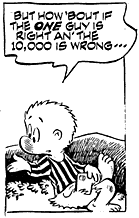By: Karen De Coster
Yahoo published a piece on the “real” unemployment rate last week, putting that number at 17.5%. That’s still a government statistic, so you can bet it’s understated. The looming problem for many families is underemployment. The guy who came to fix my cable TV issue (Wide Open West) was an experienced and skilled carpenter who worked on luxury houses during the boom years, when McMansions became the norm. He told me he took his current job — because he needed a job, any job — for one-third the salary of his carpenter job. These stories abound, especially in my neck of the woods. Keeping up with current bills plus rising costs, while taking a reduction in wages, is a stressful and nightmarish situation to endure.
Yet when the government uses interventionist measures to “create jobs,” they measure those numbers and claim success merely because a job — any job — was created. The qualitative aspect that is missing, however, is what kind of job is created — unskilled labor? temporary work? low-wage job? The government never takes into account the people that lose higher-paid, skilled jobs and have to accept a lower-level job that keeps them underemployed.
The effect of the boom period is to lure people into living a more prosperous lifestyle based on their new wages (including overtime payment), even when they aren’t living beyond their means. Many times, they are appropriately raising their lifestyle to accommodate what they believe to be their new level of prosperity. The fallout and bust can no longer accommodate all of the home builders, electricians, carpenters, machinists, and other skilled workers whose labor was in high demand during the false prosperity years. And what about the marginal jobs that were in demand because of too many people with too much credit, such as home media consultant, home interior consultant/designer, etc.?
Then there are all of those specialty stores that were opened by entrepreneurs looking to cash in on hobbies and luxury buys that were fueled by the Fed’s boom — stores specializing in birding, scrapbooking, spas and game rooms, fireplaces and grills, perfume, expensive trinkets, party supplies, smokers’ supplies, kitchen gadgetry, feng shui, and overpriced gym equipment. And remember all of the shops that opened up to sell flooring, carpeting, tile, and blinds? Everyone had magical equity in their homes and used them as ATMs to fund their home renovations, hence all of the businesses popping up to accommodate the demand.
The number of businesses that opened up to meet the needs of eclectic discretionary purchases was unsustainable from the beginning. In my neighborhood, most of these businesses that sprang up during the boom have already closed.
Subscribe to:
Post Comments (Atom)



No comments:
Post a Comment